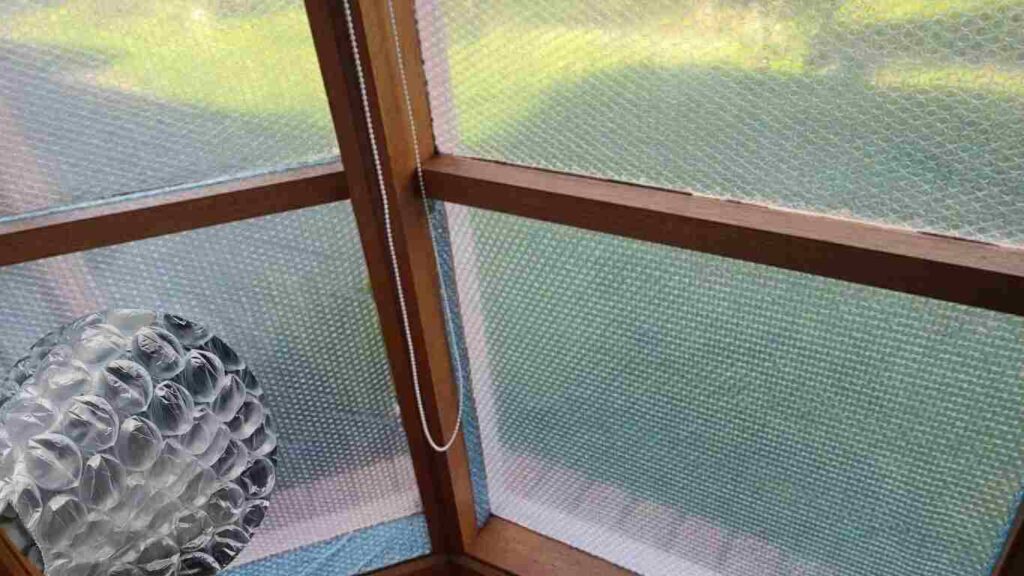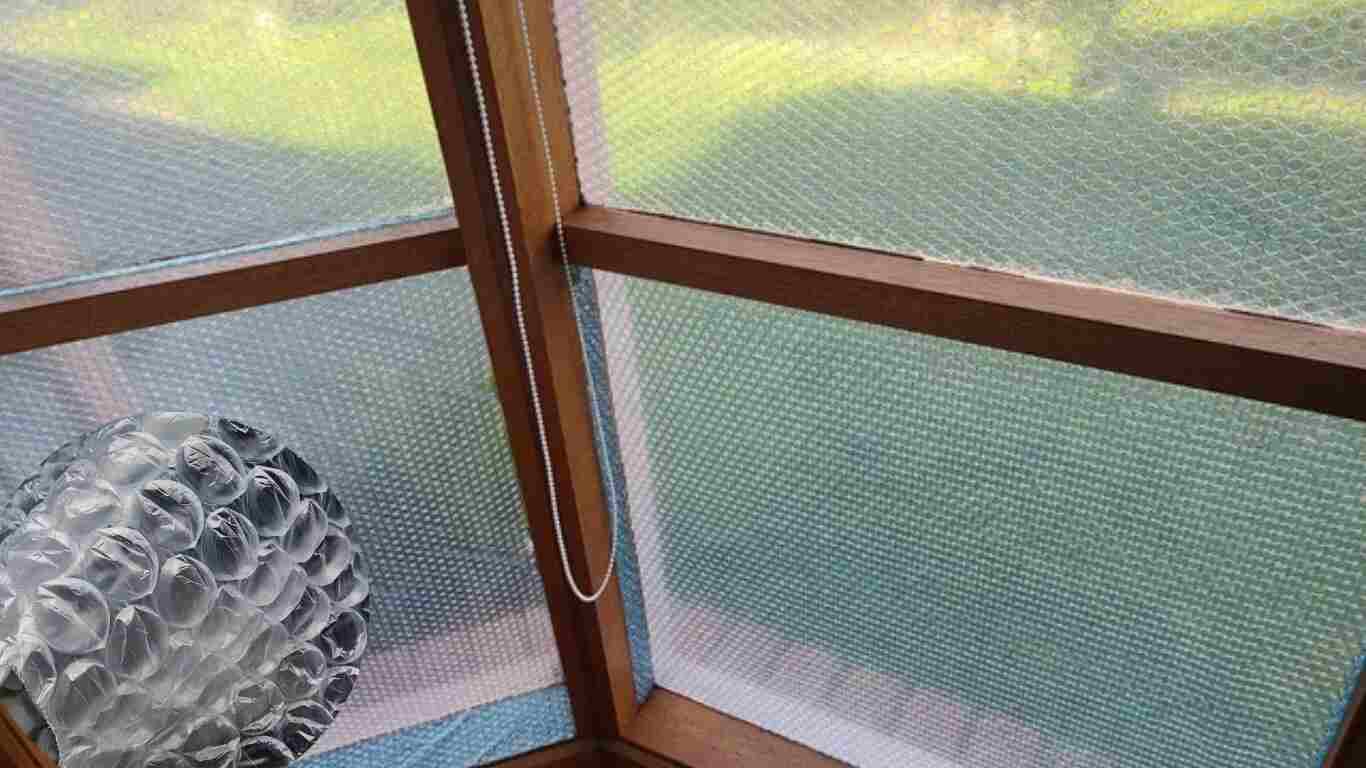With the emergence of remote work in the modern world, a comfortable home office has become imperative. Perhaps one of the most underrated elements of this comfort is stable workspace temperature maintenance. Insulating a basement in the traditional way can be costly and time-consuming, but there’s an oddly simple, inexpensive solution: bubble wrap insulation.
Plastic bubble wrap, usually used for packing, can actually be used as an efficient and cheap insulation material. This is a multipurpose material that can help with everything from minimizing heat loss in winter to minimizing heat gain during summer, which makes your home office a much more energy-efficient and comfortable space.
| Feature | Description |
|---|---|
| Multiple layers of air-filled bubbles encased in plastic film, often with reflective foil for enhanced performance | |
| Single-layer and double-layer bubble wrap insulation. Double-layer provides better thermal insulation and moisture resistance | |
| Residential attics, walls, floors; garage doors; windows; crawl spaces; greenhouses; shipping containers | |
| Typically ranges from R-1 to R-3 depending on the type and application | |
| Cost-effective, lightweight, easy to install, flexible, reusable. Reduces heat transfer by trapping air and reflecting radiant heat | |
| Can last several years but may degrade with exposure to moisture or sunlight |
The Science of Bubble Wrap Insulation
What is Bubble Wrap Insulation?
Bubble wrap is essentially a lightweight plastic material that contains small air bubbles. These air pockets are what make it so effective as an insulator. Because bubble wrap traps air — a very poor heat conductor — this forms an insulator against conductive heat transfer between two surfaces.
As insulation, bubble wrap can be used to maintain a stabilized internal temperature whilst preventing unnecessary heat loss during cold climates or heat gain in hotter climates. This simple mechanism makes it an excellent low-cost alternative to traditional insulation materials.
Advantages of using bubble wrap for insulation
What is the benefit of using bubble wrap instead of other materials? Here’s what sets it apart:
Energy Efficiency
Bubble wrap minimizes heat transfer and helps you reduce energy consumption. That translates to lower heat bills in the winter and less to pay in the summer to keep cool.
Cost-Effectiveness
Bubble wrap is more cost effective and easier to find than traditional insulation, Wright said. You don’t need to spend a fortune to make your home office more usable.
Easy Installation
And you can forget about hiring pros or purchasing specialized equipment. Bubble wrap is so simple to install — a fast DIY project anyone can do.
Versatility
Bubble wrap goes almost anywhere: windows, walls, ceilings, even doors. Its versatility allows many applications at your home office setup.
Myths About Bubble Wrap Insulation Wrap
Despite its advantages, misconceptions about bubble wrap insulation do exist and it’s important to tackle these:
“It does not provide effective real insulation.”
Of course, bubble wrap is not nearly as solid as professional-grade insulation, but it has its uses in specific places like windows and smaller areas where you need quick solutions.
“It makes places look ugly.”
While aesthetics may be an issue, bubble wrap can be used in such a way that is discreet and functional. Also, any slight visual drawbacks are often outweighed by the energy savings.
You may also read (what gas is used in an apartment)
“It’s not durable.”
- Good bubble wrap can have a long lifespan, primarily if it is applied properly and protected from wear and tear.
- Home Office Bubble Wrap Applications
- How You Can Use Bubble Wrap in Your Home Office?
Bubble wrap is a very versatile product and can be used in multiple areas of your home office. Here are a few use cases:
Windows
One of the biggest areas for heat loss in any room is through the windows. This gives you bubble wrap directly on the windows, creating a thermal barrier.
It adds privacy by blocking the view from outside.
Walls
The wall should be thin, which results in fluctuating temperatures. You can minimize heat transfer and even reduce sound leakage by attaching bubble wrap to the innards of walls.
Ceilings or Attics
Needless to say, heat ascends, so a lot of heat losses is through the ceiling. Overhead bubble wrap can also be applied to ceilings or attic spaces to build heat and reduce energy loss.
How Does It Improve Comfort?
Bubble wrapping your home office can provide you the following benefits in terms of comfort:
Stable Temperatures: No more freezing mornings or sweltering days. Bubble wrap insulation will keep the same temperature in your home.
Soundproofing: Due to the air pouches, bubble wrap helps as a sound barrier, insulating your home from outside noise or noise from other rooms in your home.
More productivity: To be focused and productive at work hours your environment and the atmosphere must be comfortable.
- Guide To Install Step By Step Process
- How to Get Your Space Ready for Installation
- Prior to the initiation, its crucial to create space at your home office for the assembly. Follow these steps:
Assess Your Needs
Determine where in your home office you most need insulation. Do you feel cold drafts coming in from your windows? Is your wall thin and poorly insulated? These problem areas should be prioritized.
- Gather Your Materials
- Bubble wrap (size it right for you)
- A spray bottle with water
- Scissors or a utility knife
- Tape or adhesive
- Measuring tape
- Clean Surfaces
Make sure every surface is clean with no dust or dirt. This will allow the bubble wrap to stick better.
How to Apply Bubble Wrap to Your Windows
Windows are one of the simplest and most effective places to put bubble wrap insulation. Here’s how:
Measure and Cut
Measure your window with a measuring tape.
In addition to the outlining on the bubble wrap, cut the bubble wrap to the size of your window, leaving a small amount to overlap the edges for fuller coverage.
Spray Water
Spray some water on the glass side of the window with a spray bottle. This allows the bubble wrap to stick without using tape.
Apply Bubble Wrap
Set the bubble wrap on the window, bubble-side against glass. Scrape off excess and press down gently to make sure it sticks evenly.
Mounting to Walls or Ceilings
For walls or ceilings, perform the following:
Measure and Cut
Cut the bubble wrap to the area you want to cover.
Attach Securely
Apply bubble wrap to the surface using adhesive tape, staples or similar method. Be certain it’s properly seated; otherwise, you risk sagging.
Seal the Edges
Use tape to seal the edges so that the air cannot leak out, providing maximum insulation.
- Best Practices for Using this Tool
- How to Choose the Right Bubble Wrap
- All bubble wrap is not created equal. Consider the following:
- Big Bubbles: Insulate better due to more air volume but may not squeeze through in small spots.
- Small Bubbles: More manageable in small spaces and effectively used, but less so for thermal protection.
Obtaining more on top of being efficient
- For bude wrap insulation to be even more effective:
- Layer with Reflective Foils: A reflective layer adds extra capability to retain heat.
- Fill Gaps and Cracks: Use weatherstripping or caulk to seal air leaks that bubble wrap alone doesn’t cover.
Layering: You can double up on sheets of bubble wrap for additional insulation.
Conclusion
To insulate with bubble wrap: Using bubble wrap to insulate is a practical, cheap and easy way to help make your home office a better and more comfortable workplace. From lowering energy expenses to ensuring indoor temperature stability, such a wonderous material provides ample benefits. Bubble wrap is an easy DIY option that can yield great results when insulating windows, walls, or ceilings.
Why not give it a try? Just get started, you don’t have to adopt this method throughout your home office all at once; pick one area and see the difference for yourself. To see the full list of links and more tips visit your local hardware store to get the supplies you need! Your feet (and your bank account) will thank you!
You may also read (budget friendly home)






